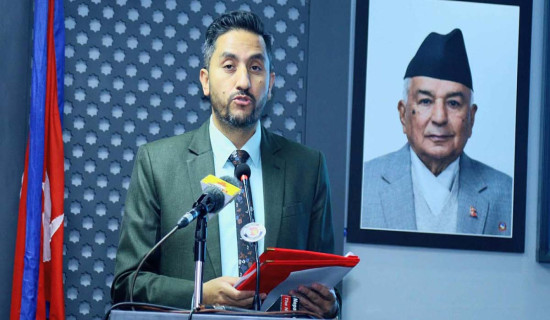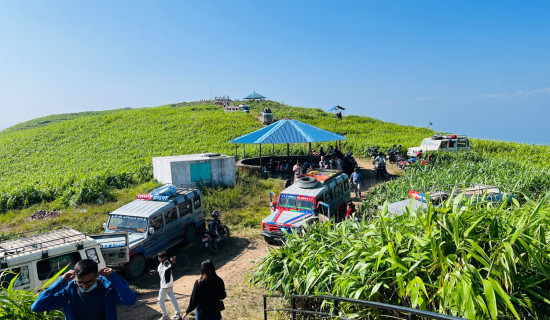- Saturday, 18 October 2025
End Provincial Disparity
The recent statistics made public by the National Statistics Office (NSO) regarding the Provincial GDP estimation for the current fiscal year 2023/24 highlights the longstanding provincial disparities. According to the statistics, the estimated GDP growth rate of Gandaki – 4.55 per cent – is the highest while that of Karnali – 3.39 per cent – is the lowest. That figure for Lumbini is 4.05 per cent, Bagmati 3.96 per cent, Madhes 3.78 per cent, Koshi 3.51 per cent, and Sudurpaschim 3.41 per cent. Compared to last fiscal year, the contribution of Koshi, Madhes, Karnali and Sudurpaschim provinces has marginally decreased while the contribution of the rest of the provinces has marginally increased.
The national annual GDP is estimated at Rs. 5,705 billion, and Nepal's economy growth rate at 3.87 per cent. According to the data, Bagmati's GDP accounts for 36.4 per cent of the total, Koshi 15.8 per cent, Lumbini 14.3 per cent, Madhes 13.1 per cent, Gandaki 9.1 per cent, Sudurpaschim 7.1 per cent and Karnali 4.3 per cent. In terms of population, Madhes and Bagmati have a population of over 6 million, Lumbini and Koshi over 5 million, Gandaki over 2.4 million, Sudurpaschim over 2.6 million, and Karnali over 1.6 million. When population is factored in, the per capita GDP is estimated to be the highest in Bagmati and the lowest in Madhes.
Looking at the economic activities according to industrial classification, the contribution of agriculture sector is highest in all provinces but Bagmati. The growth rate of electricity sector is highest in Lumbini. The growth rate of construction sector is negative in all provinces, while the growth rate of manufacturing industry sector is negative in all provinces except Karnali. It seems that the per capita GDP of the provinces other than Gandaki and Bagmati is lower than the national average.
These disparities are nothing new. The constitution of Nepal promulgated in 2015 seeks to address structural inequality through the adoption of federalism. But its shortfall in making this happen calls for some concrete measures aimed at those provinces faring poorly. Low GDP is indicative of low Human Development Index (HDI) and widespread poverty. One of the most effective tool to lift productivity is education. A skilled and educated workforce, of course, commands higher pay and benefits, because they are the ones to make industries run. That said, we also need to take into account the resources provinces are endowed with. For a resource-rich province, a path to prosperity and development is smooth, while for its resource-poor peer, it's bumpy.
To effectively deal with this problem, the statute has made several provisions for equitable distribution of resources among the federal, provincial and local level entities considering inter-governmental fiscal transfer as one of the significant component of fiscal federalism. Should this not suffice, Intergovernmental Fiscal Management Act 2017 has been enacted and implemented with an objective of managing the issues related to revenue rights, revenue sharing, budget management, public expenditure and fiscal discipline among the federal, provincial and local level entities. This Act has basically included the issues such as revenue and expenditure responsibilities, intergovernmental fiscal transfers, internal loan that can be taken by province and local entities as important elements of fiscal federalism. The provinces require working in the spirit of the constitution to ensure regional balance and economic prosperity.
















